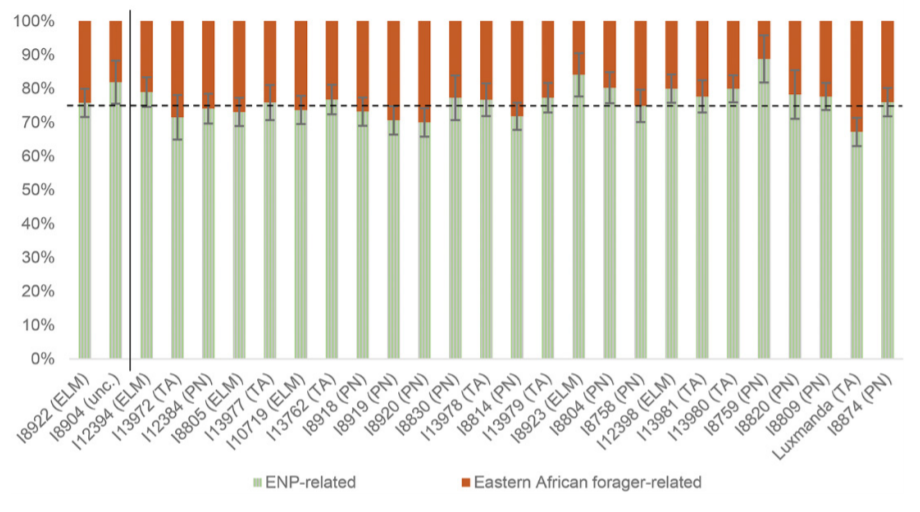Article:
https://science.sciencemag.org/content/early/2019/05/29/science.aaw6275
PDF:
https://reich.hms.harvard.edu/sites...stLipsonSawchuk_Science_PastoralNeolithic.pdf
Extract:
How food production first entered eastern Africa ~5000 years ago and the extent to which people moved with livestock is unclear. We present genome-wide data from 41 individuals associated with Later Stone Age, Pastoral Neolithic (PN), and Iron Age contexts in what are now Kenya and Tanzania to examine the genetic impacts of the spreads of herding and farming. Our results support a multi-phase model in which admixture between northeastern African-related peoples and eastern African foragers formed multiple pastoralist groups, including a genetically homogeneous PN cluster. Additional admixture with northeastern and western African-related groups occurred by the Iron Age. These findings support several movements of food producers, while rejecting models of minimal admixture with foragers and of genetic differentiation between makers of distinct PN artifacts.
https://science.sciencemag.org/content/early/2019/05/29/science.aaw6275
PDF:
https://reich.hms.harvard.edu/sites...stLipsonSawchuk_Science_PastoralNeolithic.pdf
Extract:
How food production first entered eastern Africa ~5000 years ago and the extent to which people moved with livestock is unclear. We present genome-wide data from 41 individuals associated with Later Stone Age, Pastoral Neolithic (PN), and Iron Age contexts in what are now Kenya and Tanzania to examine the genetic impacts of the spreads of herding and farming. Our results support a multi-phase model in which admixture between northeastern African-related peoples and eastern African foragers formed multiple pastoralist groups, including a genetically homogeneous PN cluster. Additional admixture with northeastern and western African-related groups occurred by the Iron Age. These findings support several movements of food producers, while rejecting models of minimal admixture with foragers and of genetic differentiation between makers of distinct PN artifacts.
Last edited:




